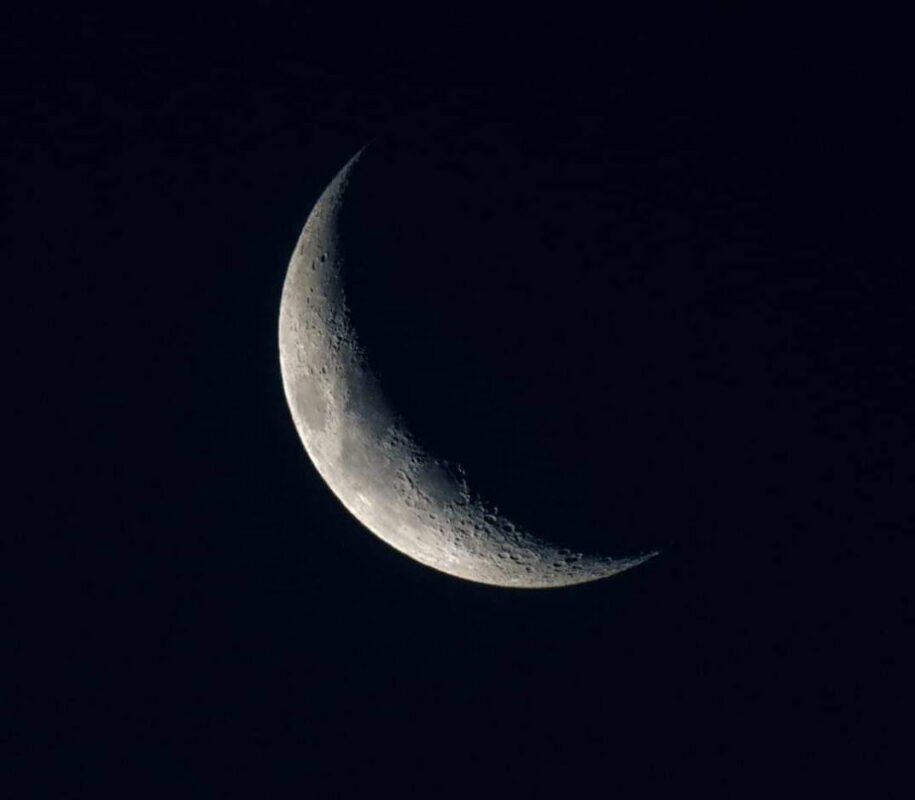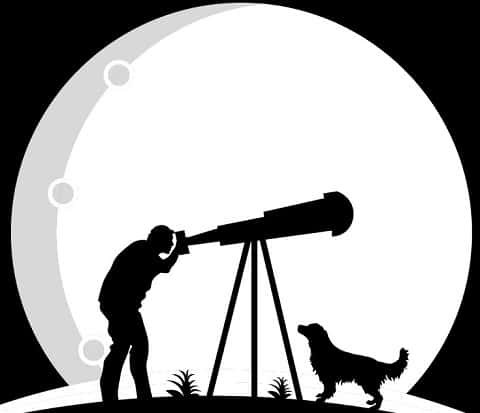Astrophotography has gained immense popularity among photography enthusiasts in recent years, and with the rapid advancements in smartphone camera technology, capturing the night sky has never been more accessible.
As smartphones continue to push the boundaries of low-light photography, users can now capture stunning images of celestial bodies, constellations, and even the Milky Way galaxy, all with the device in their pockets.
In this article, we will explore the best smartphones for astrophotography, considering factors such as camera capabilities, sensor size, and software optimizations.
When choosing a smartphone for astrophotography, the key aspects are low-light performance, manual controls, long exposure settings, and stabilization features.
While a high-quality camera is essential, the right combination of hardware and software sets the best astrophotography smartphones apart from the rest.
From flagship models to budget-friendly options, we have compiled a list of the top contenders that will help you capture the magic of the cosmos and transform your nighttime photography experience.
Stay tuned as we delve into the world of astrophotography and unveil the smartphones that will elevate your stargazing sessions to a whole new level.
Google Pixel 8 Pro
The Google Pixel 8 Pro is undoubtedly one of the best smartphones for astrophotography, and here’s why. With its powerful camera system, cutting-edge features, and the renowned Google Camera app, this device is well-equipped to capture the beauty of the night sky.
Pros:
- Impressive low-light performance
- Advanced computational photography
- Astrophotography mode in Google Camera app
- Excellent hardware and software integration
Cons:
- Expensive compared to some alternatives
- Limited manual controls in the native camera app
The Google Pixel 8 Pro boasts a remarkable low-light performance thanks to its large 50MP main sensor, which allows for more light to be captured by each pixel, resulting in clearer and more detailed images.
Additionally, the device utilizes Google’s Tensor SoC, which further enhances the camera’s capabilities by incorporating AI and machine learning algorithms to optimize the photography experience. This ensures users can use the phone’s hardware to produce stunning night sky images.

If you have an image taken with a Google Pixel 8 Pro, please email it to me and, with your permission, I will add it to this post with full credit.
One of the most significant advantages of the Pixel 8 Pro for astrophotography is its dedicated Astrophotography mode in the Google Camera app. This feature automatically enables longer exposure times and uses computational photography to reduce noise and enhance the details in your shots. This mode is designed to capture stars, constellations, and other celestial bodies, making it an invaluable tool for astrophotography enthusiasts.
The excellent hardware and software integration in the Google Pixel 6 Pro sets it apart from its competitors. Google’s AI-powered algorithms work with the hardware to deliver well-balanced, sharp, and detailed images, even in challenging lighting conditions. This seamless integration allows for a hassle-free astrophotography experience that doesn’t require extensive tinkering with manual settings or third-party apps.
However, the Pixel 8 Pro does come with a few drawbacks. Its price point is relatively high compared to some alternatives, which might be a factor to consider for budget-conscious buyers. Moreover, while the Google Camera app is excellent for most users, photography enthusiasts who prefer more manual controls may find it somewhat limiting.
Despite these minor cons, the Google Pixel 8 Pro remains a top choice for astrophotography enthusiasts. Its impressive camera capabilities, dedicated Astrophotography mode, and seamless hardware-software integration make it a powerful tool for capturing breathtaking night sky images.
iPhone 15 Pro
The iPhone 15 Pro has earned its place among the best smartphones for astrophotography due to its exceptional camera system, advanced features, and superior computational photography capabilities. Equally, the iPhone 14 Pro deserves a special mention here.
Pros:
- Excellent low-light performance
- Night mode available on all lenses
- ProRAW format for greater editing flexibility
- Consistent, high-quality image processing
Cons:
- Expensive compared to some alternatives
- Limited customization options in the native camera app
The iPhone 15 Pro excels in low-light performance, crucial for capturing stunning astrophotography shots. The primary camera boasts a large sensor, allowing more light to be collected and resulting in cleaner, more detailed images of celestial objects.
The ultra-wide lens, in particular, is an essential tool for capturing expansive night sky scenes.
One of the key advantages for astrophotography is the availability of Night mode on all lenses. This feature ensures you can capture stunning night sky images regardless of lens.
Night mode uses computational photography to merge multiple exposures, reducing noise and enhancing details in low-light conditions. This results in impressive astrophotography images that are both vivid and sharp.
Another significant benefit of the iPhone 15 Pro for astrophotography is their support for the ProRAW format. This feature lets users capture images with minimal compression, preserving more details and dynamic range.
ProRAW images offer greater flexibility in post-processing, allowing photographers to fine-tune their astrophotography shots for optimal results.
The iPhone 15 Pro stands out for its consistent, high-quality image processing. Apple’s A17 Bionic chip, coupled with advanced AI algorithms, ensures that your astrophotography images are processed uniformly and with excellent quality.
This level of consistency is vital when capturing the night sky, as it helps to preserve the natural beauty and intricate details of celestial objects.
However, the iPhone 15 Pro is not without its drawbacks. The premium price point may deter budget-conscious buyers, and the native camera app offers limited customization options for those who prefer more manual control over their photography experience.
Despite these minor cons, the iPhone 15 Pro remains a top choice for astrophotography. The exceptional low-light performance, Night mode on all lenses, ProRAW format support, and consistent image processing make it an outstanding choice for capturing breathtaking night sky images.

If you have an image taken with an iPhone 15 Pro, please email it to me and, with your permission, I will add it to this post with full credit.
Samsung S24 Ultra
The Samsung S24 Ultra has earned a reputation as one of the top smartphones for astrophotography thanks to its remarkable camera capabilities, versatile features, and cutting-edge imaging technology.
Pros:
- Exceptional low-light performance
- 200MP primary sensor for high-resolution images
- Dedicated Night mode for enhanced low-light photography
- Powerful zoom capabilities
Cons:
- High price point – more expensive than the iPhone or Google Pixel
- Large file sizes for 200MP images
The Samsung S24 Ultra shines in astrophotography due to its outstanding low-light performance. Equipped with a 200MP primary sensor, it can capture high-resolution images that reveal intricate details in celestial objects. This large sensor also gathers more light, resulting in less noise and clearer night sky images.
A dedicated Night mode is another key advantage of the Samsung S24 Ultra for astrophotography. This mode employs advanced computational photography techniques to merge multiple exposures, effectively reducing noise and enhancing the details in low-light conditions. Consequently, the Night mode allows users to capture striking images of the night sky that are vibrant and sharp.
The Samsung S24 Ultra also boasts powerful zoom capabilities, which can be particularly useful for astrophotography enthusiasts who want to focus on specific celestial objects. With a combination of optical and digital zoom, the S24 Ultra enables users to get closer to their subjects without sacrificing image quality.
However, the Samsung S24 Ultra does have its downsides. The high price point may be a barrier for those on a budget, and the large file sizes for 200MP images can quickly consume storage space.
Nonetheless, the Samsung S24 Ultra remains a top choice for astrophotography enthusiasts. Its remarkable low-light performance, 200MP primary sensor, dedicated Night mode, and powerful zoom capabilities make it a fantastic tool for capturing awe-inspiring night sky images.
Its versatility and advanced technology blend ensures that users can consistently achieve stunning astrophotography results.
Huawei P60 Pro
The Huawei P60 Pro has emerged as one of the best smartphones for astrophotography due to its impressive camera system, advanced low-light capabilities, and innovative features tailored for capturing the night sky.
Pros:
- RYYB sensor for enhanced low-light performance
- 48MP primary camera for high-quality images
- AI-powered Night mode for superior low-light photography
- Leica-engineered lenses
Cons:
- Lacks Google apps and services
- Limited availability in some regions
One of the key reasons the Huawei P60 Pro excels in astrophotography is its unique RYYB sensor. This sensor design allows the camera to capture more light than traditional RGB sensors, improving low-light performance.
The 48MP primary camera, equipped with Leica-engineered lenses, further ensures high-quality images with rich details and accurate colors.
The AI-powered Night mode on the Huawei P60 Pro is another standout feature for astrophotography. Using artificial intelligence and computational photography techniques, the Night mode can capture multiple exposures and intelligently merge them to create a single, well-exposed image.
This process effectively reduces noise and enhances the night sky’s clarity, making it easier to capture stunning celestial scenes.
However, the Huawei P60 Pro does have some drawbacks that may impact users. The lack of Google apps and services may be a significant inconvenience for some, and the limited availability of the device in certain regions could make it difficult to acquire.
Despite these limitations, the Huawei P60 Pro remains an exceptional choice for astrophotography enthusiasts. Its advanced RYYB sensor, high-quality 48MP primary camera, and AI-powered Night mode make it a powerful tool for capturing breathtaking night sky images.
Combining innovative technology and Leica-engineered lenses ensures that users can consistently achieve remarkable astrophotography results.
Xiaomi Redmi Note 13 Pro
The Xiaomi Redmi Note 13 Pro is a compelling choice for astrophotography enthusiasts, offering an impressive camera system, strong low-light capabilities, and a highly competitive price point.
Pros:
- 200MP primary camera for high-resolution images
- Dedicated Night mode for enhanced low-light photography
- Cost-effective option for astrophotography enthusiasts
- Large battery capacity for extended shooting sessions
Cons:
- Limited manual controls for advanced users
- It may not have the same level of software optimization as flagship devices
The Xiaomi Redmi Note 13 Pro’s standout feature for astrophotography is its 200MP primary camera. This high-resolution sensor allows users to capture detailed images of celestial objects, ensuring that the night sky’s beauty is preserved in all its glory.
The large sensor size also contributes to better low-light performance, which is crucial for astrophotography.
A dedicated Night mode is available on the Redmi Note 13 Pro, specifically designed for low-light photography. This mode captures multiple exposures and intelligently combines them into a single image, reducing noise and improving detail.
The Night mode makes it easier for users to capture stunning night sky images without additional equipment or complex post-processing techniques.
The Redmi Note 13 Pro’s affordability is another key advantage for astrophotography enthusiasts. Compared to flagship smartphones with similar camera capabilities, the Redmi Note 13 Pro offers a cost-effective solution without compromising image quality.
Additionally, the device’s large battery capacity ensures that users can enjoy extended shooting sessions without worrying about running out of power.
However, there are some drawbacks to consider. The Redmi Note 13 Pro may not offer the same level of manual controls as more advanced devices, which could limit the creative options for experienced astrophotographers.
Additionally, the device may not have the same level of software optimization as flagship smartphones, potentially affecting overall image quality.
The Xiaomi Redmi Note 13 Pro is an excellent option for astrophotography enthusiasts seeking a cost-effective solution with impressive camera capabilities. Its 200MP primary camera, dedicated Night mode, and large battery capacity make it a powerful tool for capturing the night sky’s beauty.
While it may not have all the features of flagship devices, the Redmi Note 13 Pro provides a compelling balance of performance and affordability for astrophotography enthusiasts.
Sources:
- https://store.google.com/gb/product/pixel_8_pro_specs?hl=en-GB
- https://www.apple.com/uk/iphone-15-pro/
- https://www.samsung.com/uk/business/smartphones/galaxy-s/galaxy-s24-ultra-titanium-blue-512gb-online-exclusive-sm-s928blbheub/
- https://consumer.huawei.com/uk/phones/p60-pro/specs/
- https://www.mi.com/uk/product/redmi-note-13-pro-5g/
